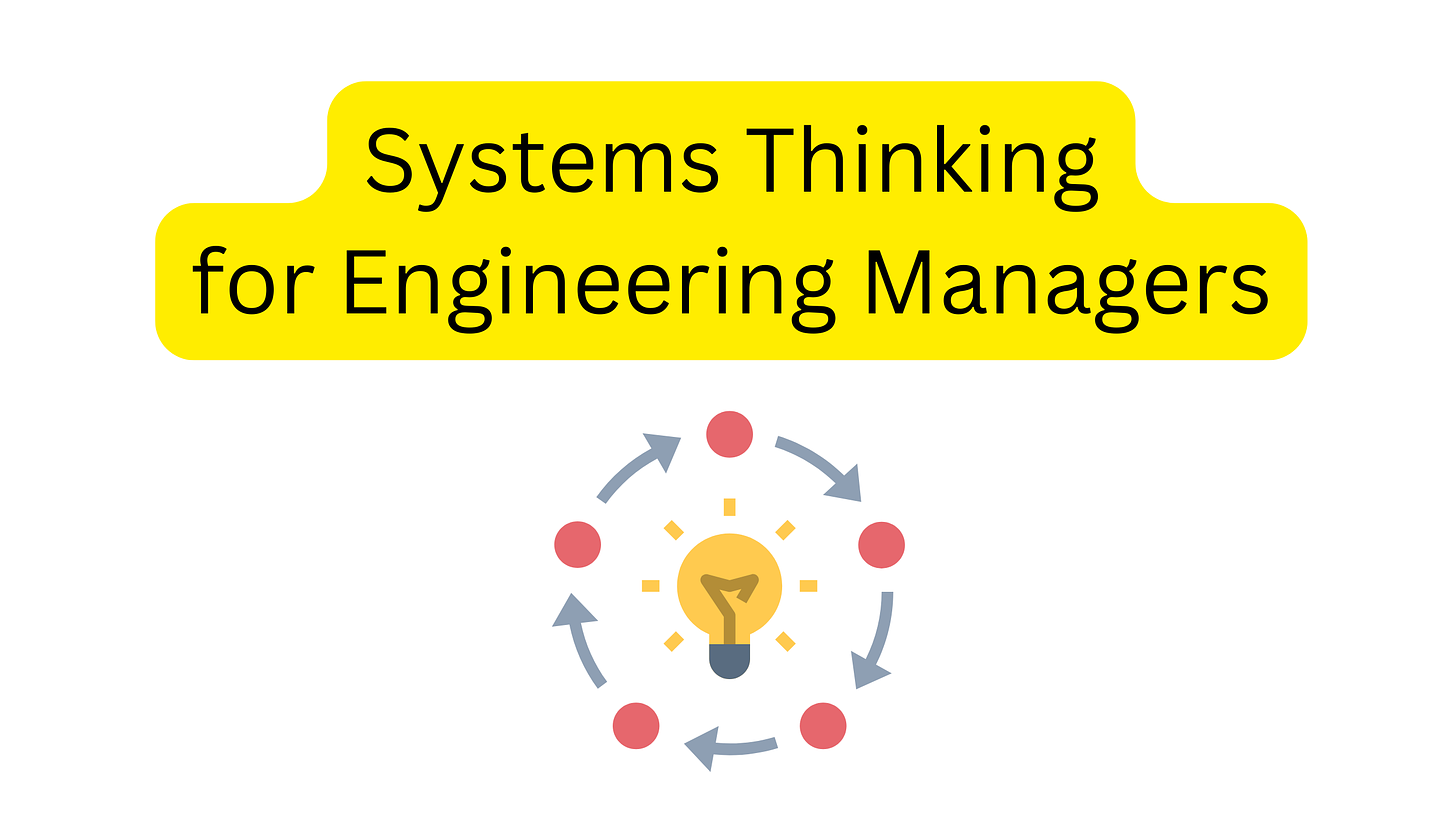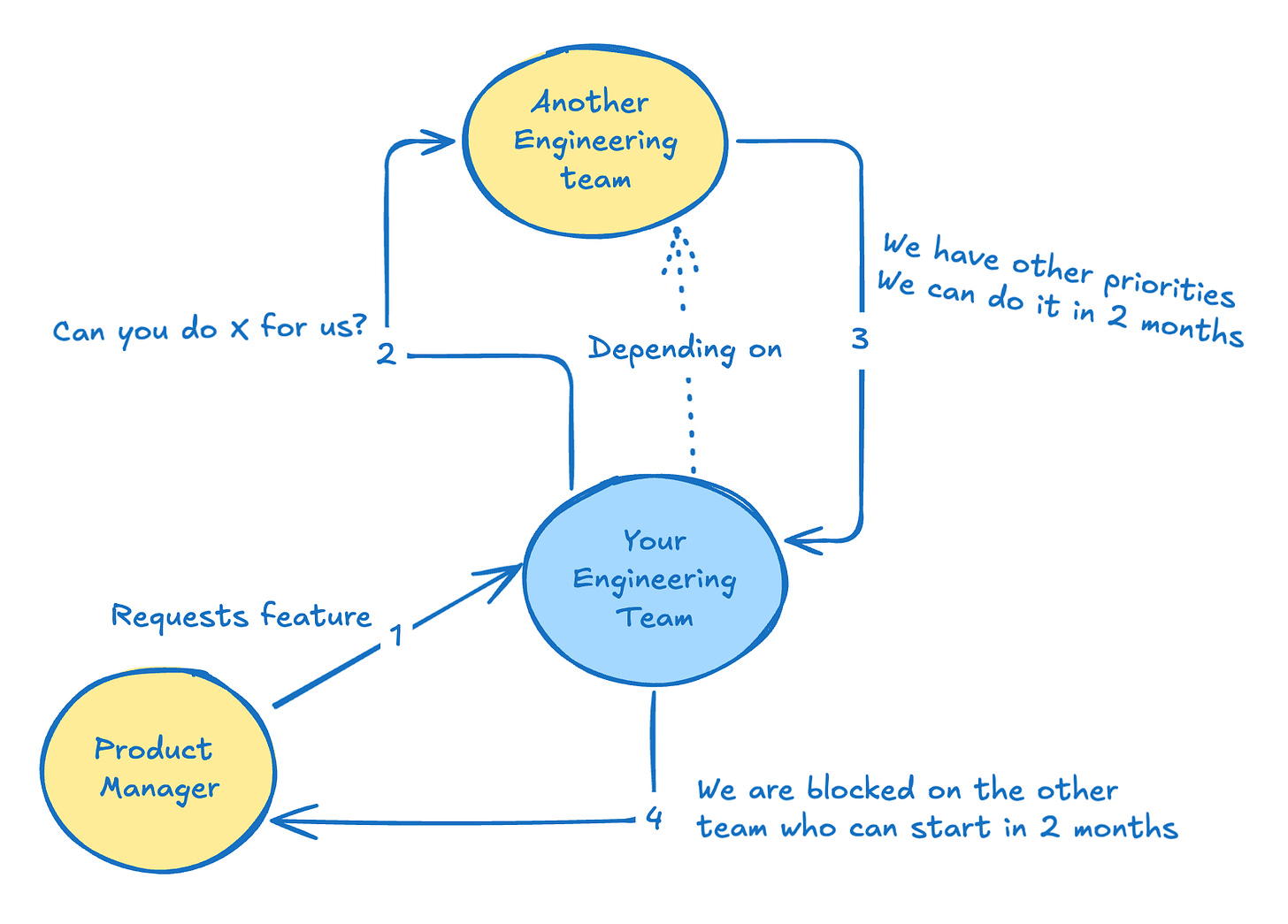How Systems Thinking can make you a better Engineering Manager
Embracing Systems Thinking can help you navigate complexity and build teams that thrive in any environment.
As an Engineering Manager, you're dealing with more than just tasks and deadlines, you're managing a web of people, projects, and technology. It can feel like solving one problem only creates another.
This is where Systems Thinking comes in. Instead of focusing on quick fixes, it helps you see how everything fits together. By thinking this way, you can make better decisions, and improve how your team works together.
In this post, I'll walk you through specific Systems Thinking strategies that you can implement right now to enhance how you lead your team and make smarter, more impactful decisions.
Consider supporting my work and subscribing to this newsletter.
As a free subscriber, you get:
✉️ 1 post per week
🧑🎓 Access to the Engineering Manager Masterclass
As a paid subscriber, you get:
🔒 1 chapter each week from the book I am writing “The Engineering Manager’s Playbook”
🔒 50 Engineering Manager templates and playbooks (worth $79)
🔒 The complete archive
What is Systems Thinking?
At its core, Systems Thinking is about understanding how the different parts of your team, processes, and projects are connected. This mindset prevents you from focusing only on isolated problems and helps you see how each decision affects the whole system.
For an Engineering Manager, Systems Thinking means recognizing how the actions of individual team members, product decisions, and project timelines all feed into each other. Poor communication between teams or frequent delays aren’t just isolated issues—they’re symptoms of a larger system problem.
How to Apply Systems Thinking in Engineering Management
Map Your Team’s System Create a system diagram showing how your team interacts with other teams, stakeholders, and processes. For example, map how feature requests move from product to engineering, and how dependencies affect timelines. This will help you visualize bottlenecks.
Identify and Address Feedback Loops Feedback loops are repeating cycles that often go unnoticed. For instance, if your team keeps receiving unclear feature requirements, which leads to more bugs, that's a feedback loop. Instead of pushing for faster fixes, find the root cause (e.g., poor communication with product managers) and fix it.
Think in Terms of Trade-offs Every decision has consequences beyond the immediate issue. For example, delaying a project may reduce short-term pressure but could lead to technical debt or decreased team morale. Systems Thinking encourages you to consider both the immediate and long-term effects of your decisions.
Look for Root Causes, Not Symptoms When an issue comes up, instead of applying a quick fix, dig deeper to understand why the issue keeps occurring. Many surface-level problems, like recurring bugs or missed deadlines, are just symptoms of underlying issues in the system.
Example: If your team is consistently missing sprint deadlines, it might not just be a resource issue. Are estimations unrealistic? Is there scope creep? Is communication between teams clear enough?
A root cause analysis using the 5 Whys technique.Why did we miss our deadline?
Because we underestimated the project scope.
Why did we underestimate the project scope?
Because we had unclear requirements.
Why did we have unclear requirements?
Because of a lack of communication with our stakeholders.
Why was there a lack of communication with stakeholders?
Because we didn’t have an early requirement review.
Why didn’t we have an early requirement review?
Because we didn’t establish a clear process for stakeholder engagement and requirement validation early in the project.
By applying Systems Thinking, you’re not just reacting to problems, you’re understanding and reshaping the system to prevent them from recurring. You’ll make better decisions, foster cross-team collaboration, and create sustainable solutions that improve your team’s overall performance.
Start small by mapping out your team’s system and tracking feedback loops. As you go, you’ll begin to see how powerful this approach is in managing complexity and driving long-term success.
Useful links
👨💻 Become a better Software Engineer with CodeCrafters (use my partner link to get 40% off and build your own Redis, Git, Kafka and more from scratch).
🎯 Book a mock interview with me (System design or Behavioural & Leadership) to smash your next real interview!
👋 Let’s connect on LinkedIn!







